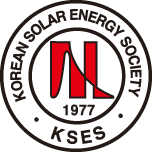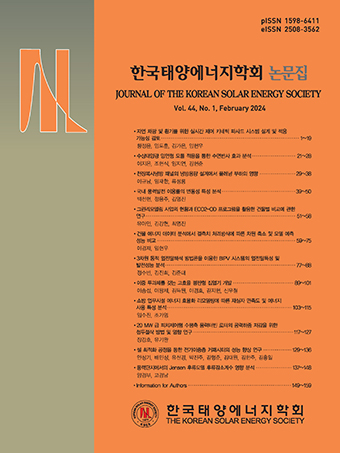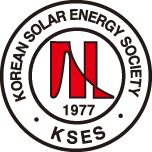Research Article
Abstract
References
Information
Kharn, Raise 35% of Renewables Obligation Ratio by 2026, 2022. http://www.kharn.kr/news/article.html?no=18292. last accessed on the 22nd November 2022.
Solar Innova, Light Transmission(Lt). https://www.solarinnova.net/en/products/photovoltaic/modules/bipv/customized#light-transmission-lt. last accessed on the 23rd November 2022.
Chen, F., Stephen, K. W., Poh, K. N., and Hui, D., Solar Heat Gain Coefficient Measurement of Semi-transparent Photovoltaic Modules with Indoor Calorimetric Hot Box and Solar Simulator, Energy and Buildings, Vol. 53, pp. 74-84, 2012, http://dx.doi.org/10.1016/j.enbuild.2012.06.005.
10.1016/j.enbuild.2012.06.005
- Publisher :Korean Solar Energy Society
- Publisher(Ko) :한국태양에너지학회
- Journal Title :Journal of the Korean Solar Energy Society
- Journal Title(Ko) :한국태양에너지학회 논문집
- Volume : 43
- No :1
- Pages :35-47
- Received Date : 2022-12-05
- Revised Date : 2022-12-27
- Accepted Date : 2022-12-29
- DOI :https://doi.org/10.7836/kses.2023.43.1.035



 Journal of the Korean Solar Energy Society
Journal of the Korean Solar Energy Society








